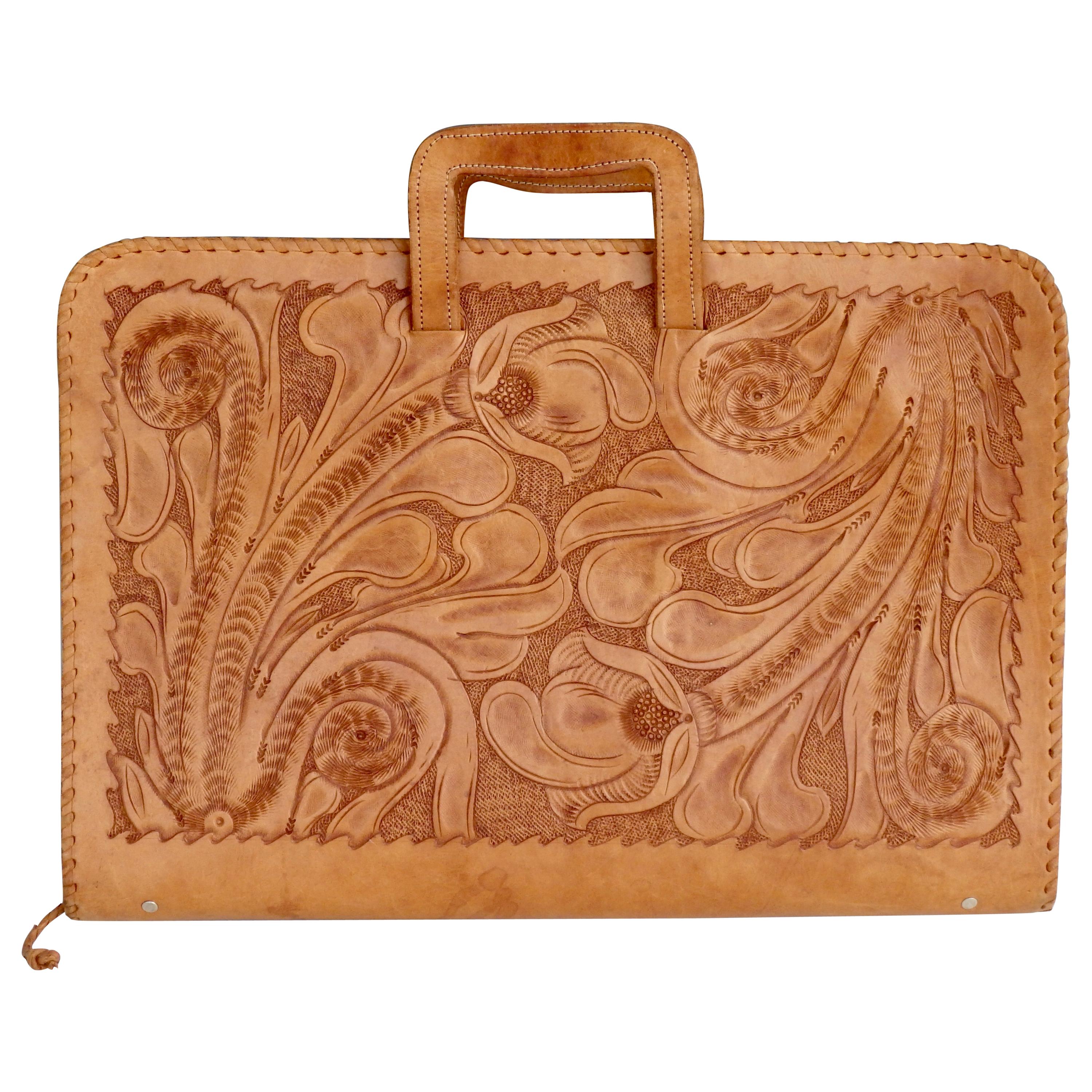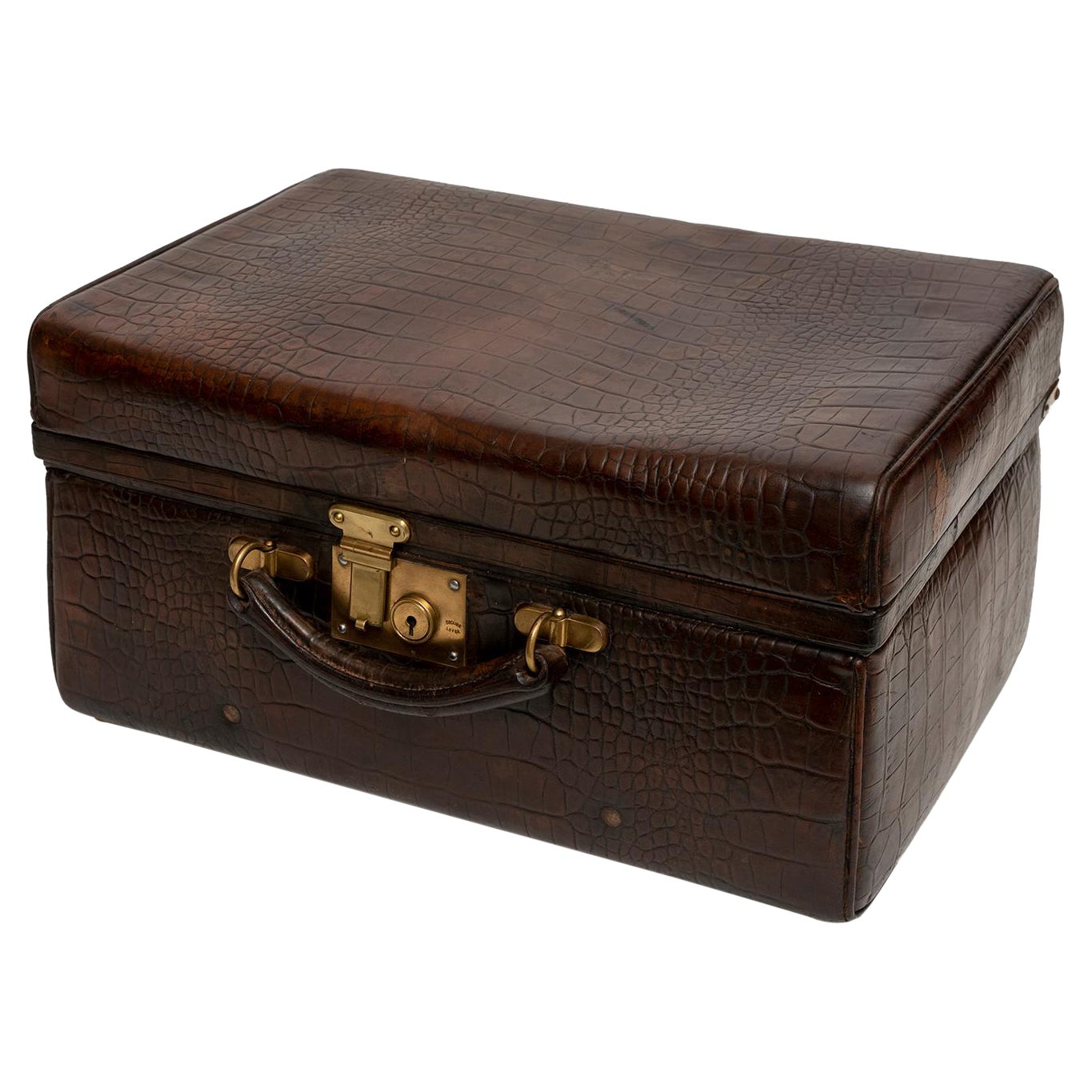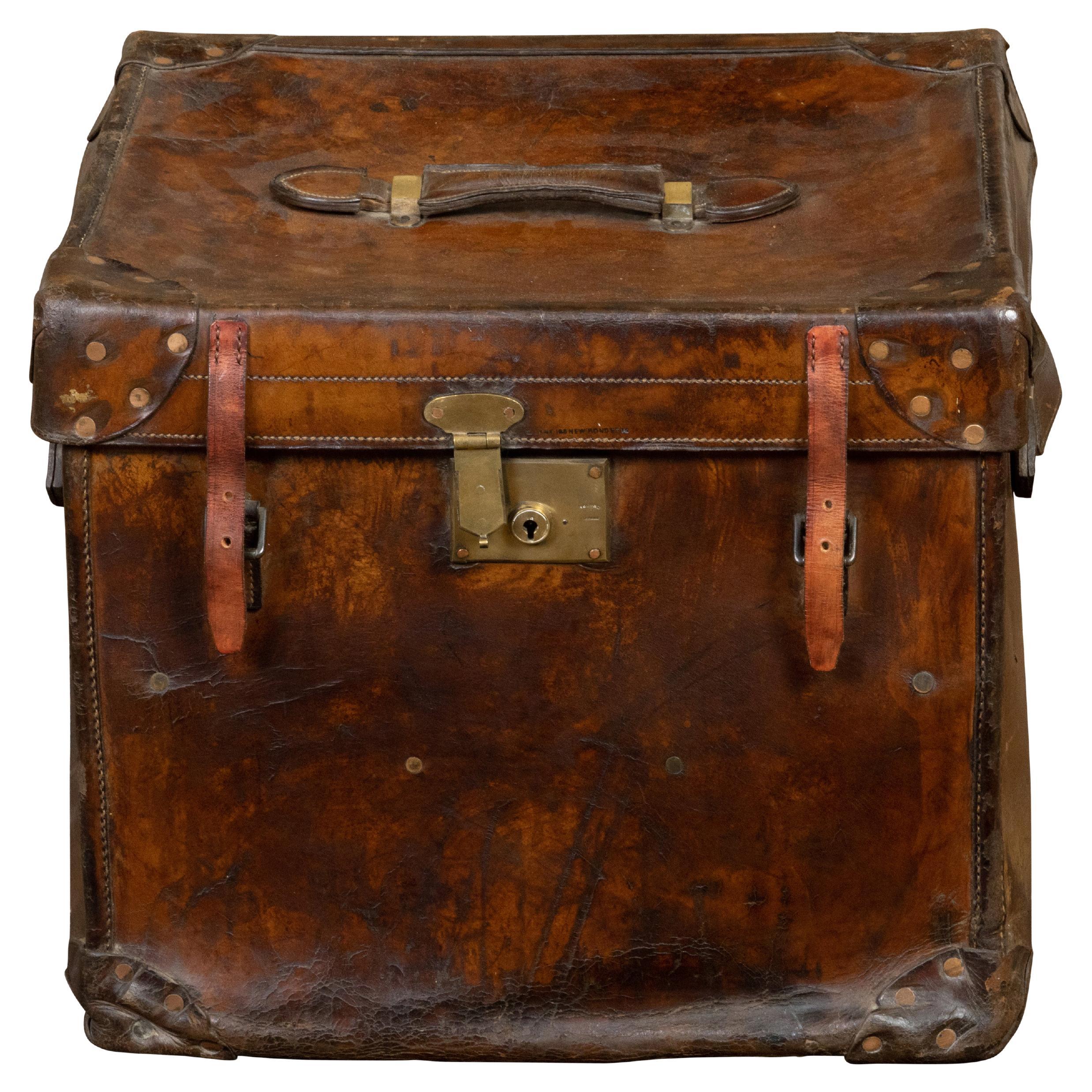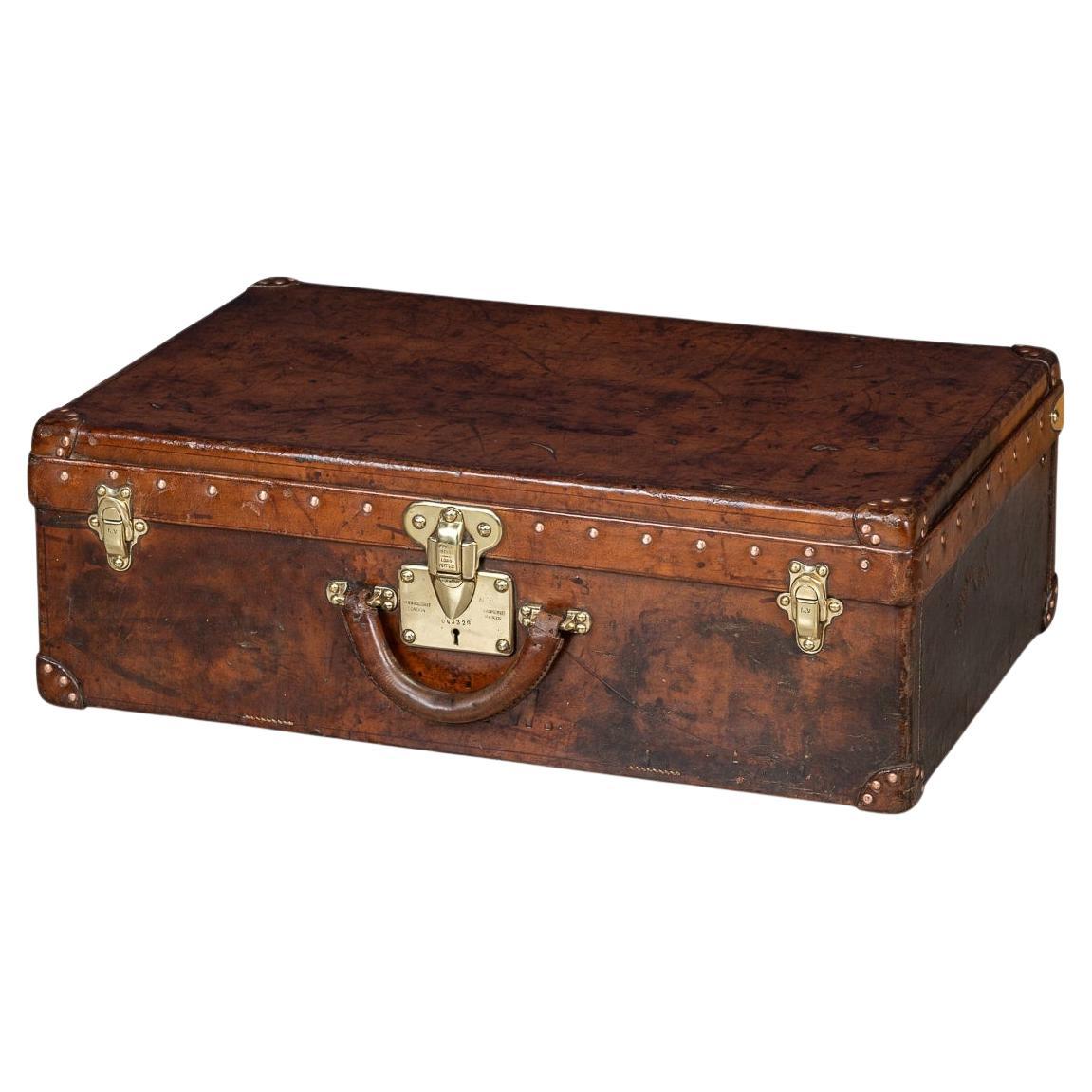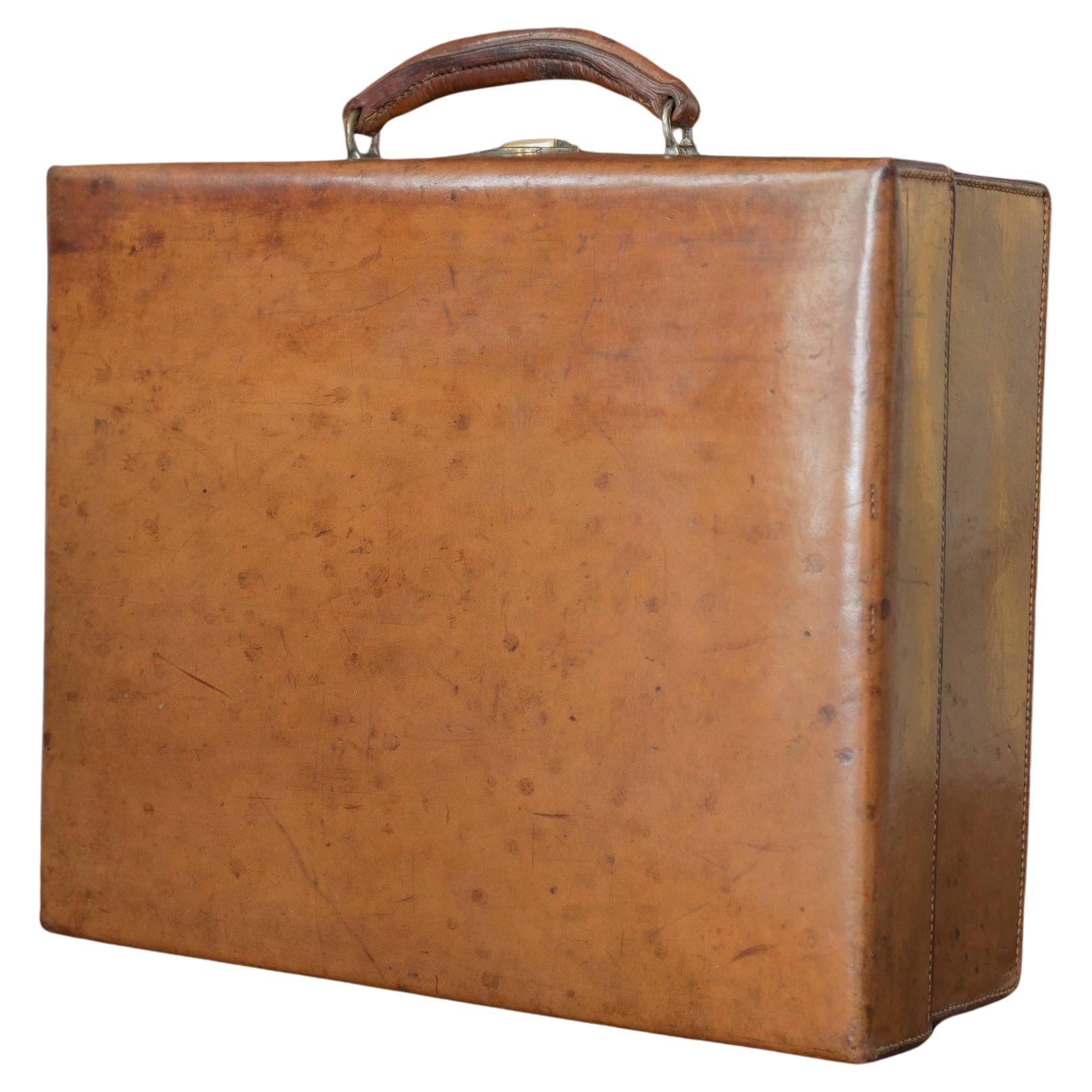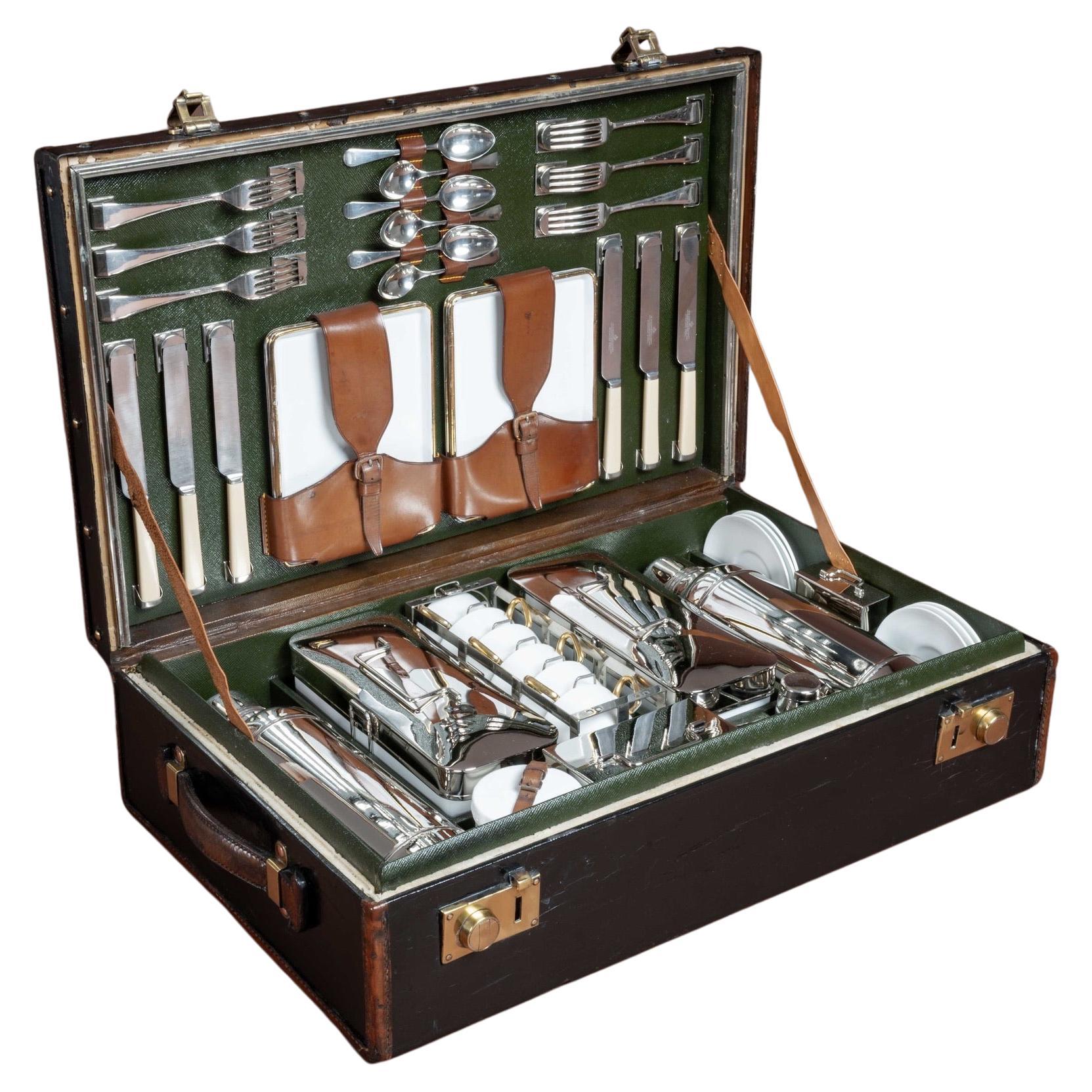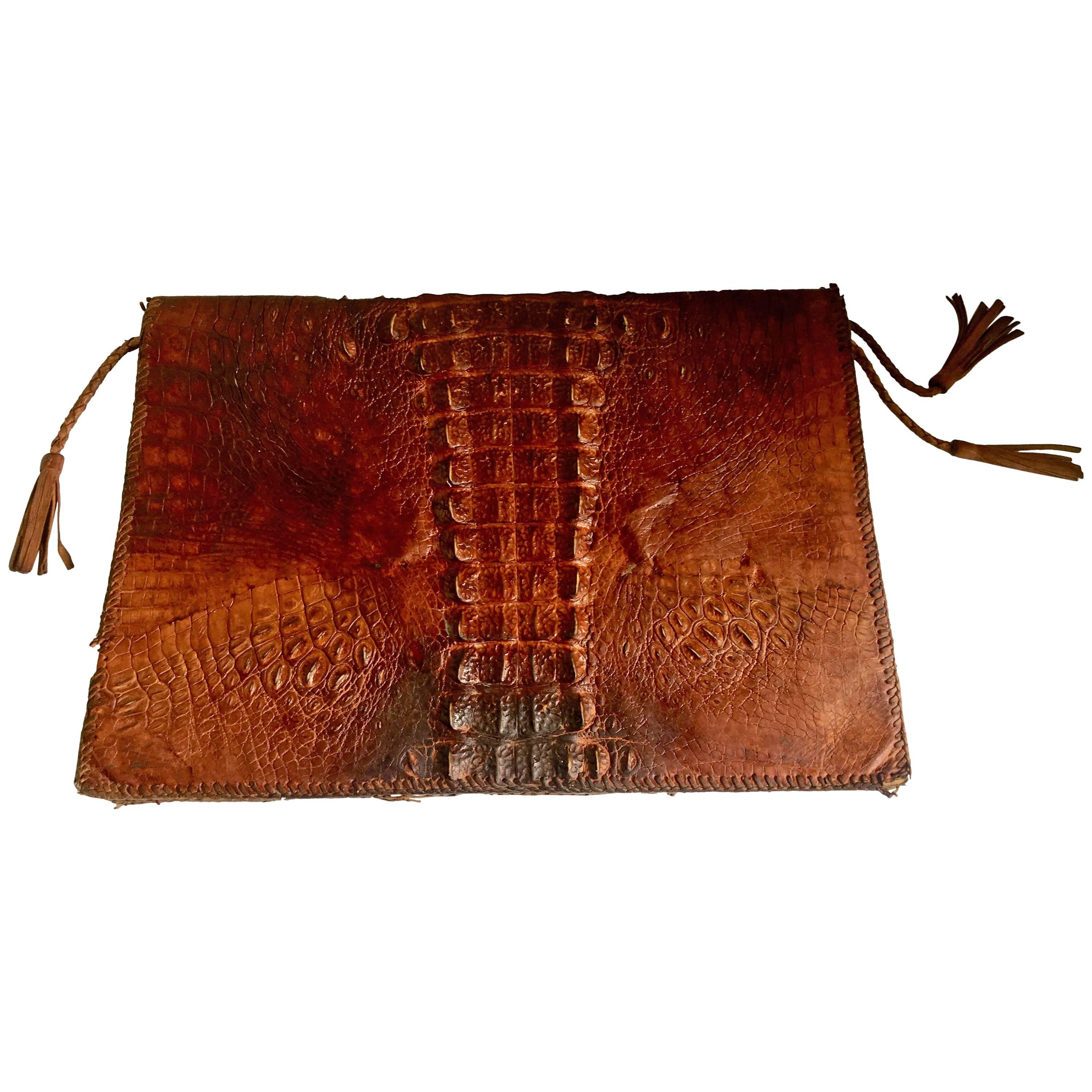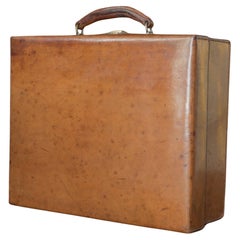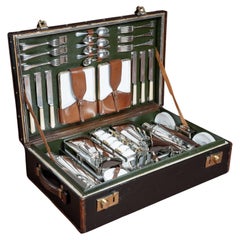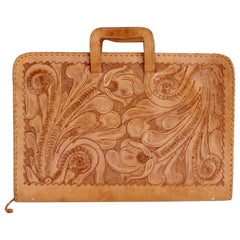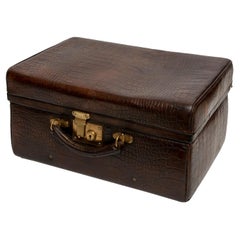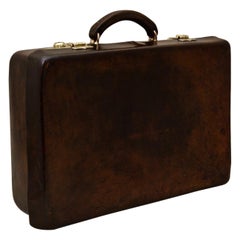
Norfolk Hide Attaché Case, circa 1920
View Similar Items
Want more images or videos?
Request additional images or videos from the seller
1 of 9
Norfolk Hide Attaché Case, circa 1920
About the Item
- Dimensions:Height: 4.38 in (11.13 cm)Width: 15.25 in (38.74 cm)Depth: 10.25 in (26.04 cm)
- Materials and Techniques:
- Place of Origin:
- Period:
- Date of Manufacture:circa 1920
- Condition:
- Seller Location:London, GB
- Reference Number:1stDibs: LU960013926822
About the Seller
5.0
Vetted Seller
These experienced sellers undergo a comprehensive evaluation by our team of in-house experts.
Established in 1989
1stDibs seller since 2013
64 sales on 1stDibs
Typical response time: 10 hours
Associations
LAPADA - The Association of Arts & Antiques Dealers
More From This SellerView All
- Leather Jewelry Case by John Pound and Company, circa 1920By John Pound & Co.Located in London, GBA beautiful leather travel jewelry case with original interior. Made by John Pound & Co. circa 1920. Dimensions: 25.5 cm/10 inches x 16 cm/6¼ inches x 10 cm/4 inches. Bentleys are ...Category
Vintage 1920s British Trunks and Luggage
MaterialsBrass
- Tan Leather Case, circa 1910Located in London, GBAn excellent sturdy tan leather case with solid brass catch and original leather lining with pockets and sleeves to accommodate fittings (now missing). The fittings that remain are t...Category
Vintage 1910s British Trunks and Luggage
MaterialsBrass
- Motoring Picnic Case, circa 1910Located in London, GBImpressive six person motoring picnic case; circa 1910. The collection comprises six enamelled tin plates, six ceramic cups with matching saucers and...Category
Vintage 1910s European Trunks and Luggage
MaterialsMetal, Brass
- Louis Vuitton Leather Case, circa 1935By Louis VuittonLocated in London, GBA beautiful Louis Vuitton leather overnight case, circa 1935 in exceptional original condition, ideal for an overnight or weekend away. With original le...Category
Antique 1830s French Trunks and Luggage
MaterialsBrass
- Goyard Wardrobe Trunk, circa 1920By GoyardLocated in London, GBAn unusual Goyard wardrobe trunk with original chevron pattern canvas covering, brass fittings and original cotton lined interior providing hanging space. Circa 1920. The proporti...Category
Vintage 1920s French Trunks and Luggage
MaterialsBrass
- Leather Steamer Trunk by Finnigans, circa 1920By Finnigans, London 1Located in London, GBAn exceptional leather trunk with original interior made by Finnigans, one of England's finest luggage making companies, circa 1920. Dimensions: 48cm/19 inches (height) x 115cm/45 i...Category
Vintage 1920s English Trunks and Luggage
MaterialsBrass
You May Also Like
- Western Style Hand Tooled Leather Attache CaseLocated in Ferndale, MIBeautiful hand tooled leather attache case with whipstitch detail, retractable handles and full outer zipper closure. The interior has two interio...Category
Mid-20th Century American Rustic Trunks and Luggage
MaterialsLeather
- Crocodile Attache Briefcase Overnight Case Original Leather InteriorLocated in BUNGAY, SUFFOLKA fine, 19th century, high quality, crocodile attache, briefcase or overnight case with exposed handle, brass hardware with lock stamped 'secure leve...Category
20th Century English Art Deco Trunks and Luggage
MaterialsBrass
- Mid Century Art Deco Hard Case Leather Attache Briefcase after Bally, HermesBy Bally, HermèsLocated in New York, NYExceptional, well crafted vintage hard leather briefcase, attache case in very fine, original, clean and ready to use condition. The case features a fitted interior with saddle bag s...Category
Mid-20th Century American Mid-Century Modern Trunks and Luggage
MaterialsLeather
- English Victorian Period 1880s Leather Hide Hat Case with Removable DividerLocated in Atlanta, GAAn English Victorian period leather hide hat case from the late 19th century, with G.C monogram, lined in red with removable divider. Created in England durin...Category
Antique Late 19th Century English Victorian Decorative Boxes
MaterialsBrass
- 20th Century Louis Vuitton Cow Hide Suitcase, France c.1920By Louis VuittonLocated in Royal Tunbridge Wells, KentA highly unusual and exceptionally rare Louis Vuitton suitcase, originating from the early years of the 20th century, distinguishes itself not with the globally renowned monogram canvas but with a distinctive covering crafted from a singular piece of cowhide. This unique piece represents a special order from Louis Vuitton, showcasing the brand's historical commitment to utilizing only the finest hides available. Unlike many of its counterparts, leather trunks and cases of this era often struggle to withstand the test of time, requiring regular treatments to prevent drying and disintegration. Remarkably, this particular example defies the odds, retaining the same supple quality it possessed on the day it first graced the shop floor. This suitcase belongs to Louis Vuitton's collection of "speciality materials," which encompasses a diverse range, including, but not limited to, zinc, copper, crocodile leather, and cow leather. A brief history about Louis Vuitton trunks: Louis Vuitton was born in 1821 to a farmer and milliner and came from a long-established working-class family in eastern France. Vuitton grew up understanding the effects of perseverance and a strong work ethic from watching his family. At the age of 16, he made the decision to walk 292 miles from his hometown to Paris to try and make a new life for himself. When he arrived the city was in the midst of industrialization with current modes of transportation evolving quickly allowing for longer journeys. With this came the need for sturdy travel pieces. Vuitton was taken as an apprentice for a successful box maker and packer named Monsieur Marechal. He learned to craft durable containers and how to pack them properly – a well-respected profession at the time.In 1854, years after he had mastered his craft and became well respected for it, Vuitton ventured out on his own to open a shop on Rue Neuve des Capucines. It was here that he began to establish himself as a luggage maker. Then, in 1858, Vuitton designed the first Louis Vuitton steamer trunk. At the time trunks had rounded tops to allow for water to run off but this did not allow for convenient stowage. Vuitton introduced a flat, yet waterproof, trunk that was easily stackable. The first of his trunks were outfitted with a grey canvas referred to as Trianon – it wouldn’t be until several decades later that the signature monogram would be introduced. With a burgeoning business, Vuitton moved his family and workplace to Asniere, where he employed twenty workers to craft his trunks. By 1900 he would have 100 employees, and in 1914 the company would more than double in size. After years of success, Vuitton began to experiment with the design of his luggage by introducing a new striped canvas pattern (1876) and later the still well-known Damier print (1888). The hand-painted patterns were developed to prevent counterfeits. Even in the late 1800s, Louis Vuitton was enough of a status symbol to warrant counterfeiting. In 1886, his son George invented and patented an ingenious locking system that made it impossible to pick the lock of their trunks. This lock is still used today. 1892 would prove to be a time of mourning for the family as Louis Vuitton passed...Category
20th Century French Other Trunks and Luggage
MaterialsBrass
- 20th Century Louis Vuitton Cow Hide Suitcase, France c.1920By Louis VuittonLocated in Royal Tunbridge Wells, KentA highly unusual and exceptionally rare Louis Vuitton suitcase, originating from the early years of the 20th century, distinguishes itself not with the globally renowned monogram canvas but with a distinctive covering crafted from a singular piece of cowhide. This unique piece represents a special order from Louis Vuitton, showcasing the brand's historical commitment to utilizing only the finest hides available. Unlike many of its counterparts, leather trunks and cases of this era often struggle to withstand the test of time, requiring regular treatments to prevent drying and disintegration. Remarkably, this particular example defies the odds, retaining the same supple quality it possessed on the day it first graced the shop floor. This suitcase belongs to Louis Vuitton's collection of "speciality materials," which encompasses a diverse range, including, but not limited to, zinc, copper, crocodile leather, and cow leather. A brief history about Louis Vuitton trunks: Louis Vuitton was born in 1821 to a farmer and milliner and came from a long-established working-class family in eastern France. Vuitton grew up understanding the effects of perseverance and a strong work ethic from watching his family. At the age of 16, he made the decision to walk 292 miles from his hometown to Paris to try and make a new life for himself. When he arrived the city was in the midst of industrialization with current modes of transportation evolving quickly allowing for longer journeys. With this came the need for sturdy travel pieces. Vuitton was taken as an apprentice for a successful box maker and packer named Monsieur Marechal. He learned to craft durable containers and how to pack them properly – a well-respected profession at the time.In 1854, years after he had mastered his craft and became well respected for it, Vuitton ventured out on his own to open a shop on Rue Neuve des Capucines. It was here that he began to establish himself as a luggage maker. Then, in 1858, Vuitton designed the first Louis Vuitton steamer trunk. At the time trunks had rounded tops to allow for water to run off but this did not allow for convenient stowage. Vuitton introduced a flat, yet waterproof, trunk that was easily stackable. The first of his trunks were outfitted with a grey canvas referred to as Trianon – it wouldn’t be until several decades later that the signature monogram would be introduced. With a burgeoning business, Vuitton moved his family and workplace to Asniere, where he employed twenty workers to craft his trunks. By 1900 he would have 100 employees, and in 1914 the company would more than double in size. After years of success, Vuitton began to experiment with the design of his luggage by introducing a new striped canvas pattern (1876) and later the still well-known Damier print (1888). The hand-painted patterns were developed to prevent counterfeits. Even in the late 1800s, Louis Vuitton was enough of a status symbol to warrant counterfeiting. In 1886, his son George invented and patented an ingenious locking system that made it impossible to pick the lock of their trunks. This lock is still used today. 1892 would prove to be a time of mourning for the family as Louis Vuitton passed...Category
20th Century French Other Trunks and Luggage
MaterialsBrass
Recently Viewed
View AllMore Ways To Browse
Attache Leather
Attache Case
Attache Case Used
Leather Attache Case
Painted Antique Trunk
Antique Trunk Table
Antique Trunk Tables
Metal Trunk Used
Trunks With Hardware
Vintage Suitcase Suitcase
Vintage Suitcase Suitcases
Steamer Furniture
Leather Wood Trunk
Used Steamer
Vintage Trunk Trunks
Leather Trunk French
Vintage Trunks For
Travelling Trunk
